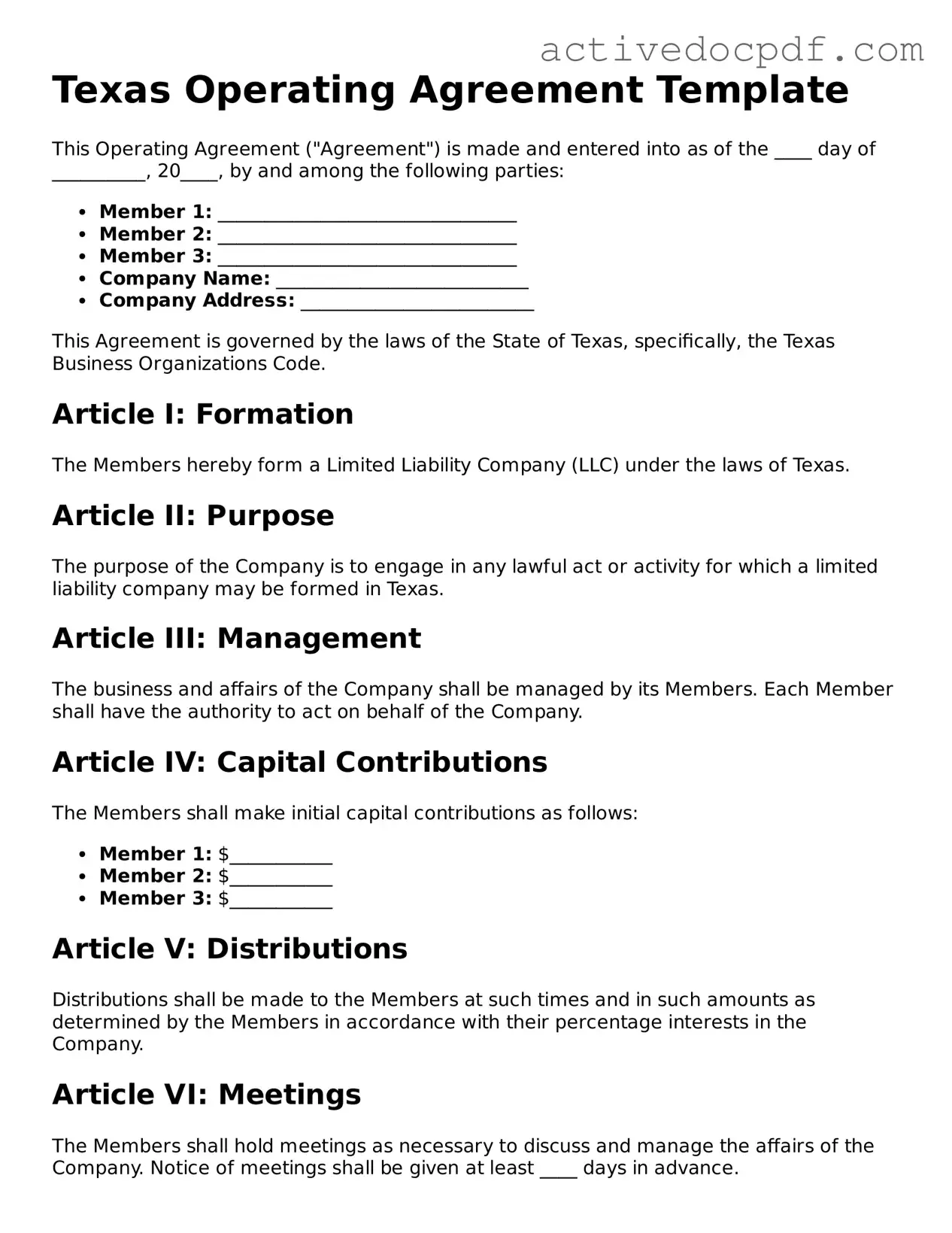What is a Texas Operating Agreement?
A Texas Operating Agreement is a legal document that outlines the management structure and operating procedures of a limited liability company (LLC) in Texas. This agreement serves as an internal guideline for the members of the LLC, detailing their rights, responsibilities, and the distribution of profits and losses.
Is an Operating Agreement required in Texas?
No, Texas does not legally require LLCs to have an Operating Agreement. However, it is highly recommended to create one. An Operating Agreement helps prevent misunderstandings among members and provides a clear framework for resolving disputes. It can also help protect the limited liability status of the LLC.
Who should create the Operating Agreement?
The members of the LLC should collaborate to create the Operating Agreement. Each member's input is valuable, as it ensures that the agreement reflects the collective vision and operational strategies of the business. Consulting with a legal professional can also be beneficial to ensure compliance with state laws.
What key elements should be included in the Operating Agreement?
Key elements of a Texas Operating Agreement typically include:
-
Company Information:
Name, principal address, and purpose of the LLC.
-
Member Details:
Names and contributions of all members.
-
Management Structure:
Whether the LLC will be member-managed or manager-managed.
-
Voting Rights:
Procedures for decision-making and voting among members.
-
Profit and Loss Distribution:
How profits and losses will be allocated among members.
-
Transfer of Membership Interests:
Guidelines for transferring ownership interests.
-
Dissolution Procedures:
Steps to take if the LLC needs to be dissolved.
How can I amend the Operating Agreement?
Amending the Operating Agreement typically requires a vote among the members, according to the procedures outlined in the original agreement. It is essential to document any changes in writing and have all members sign the amended agreement to ensure clarity and enforceability.
What happens if there is no Operating Agreement?
If an LLC operates without an Operating Agreement, the default rules set by Texas state law will apply. This can lead to unintended consequences regarding management, profit distribution, and member responsibilities. Without a clear agreement, disputes may arise, which can complicate operations and lead to potential legal issues.
Can the Operating Agreement be used in court?
Yes, an Operating Agreement can be used in court as evidence of the members' intentions and agreements regarding the operation of the LLC. It serves as a binding contract among members, and courts generally uphold the terms outlined in the agreement, provided they are lawful and not in violation of public policy.
